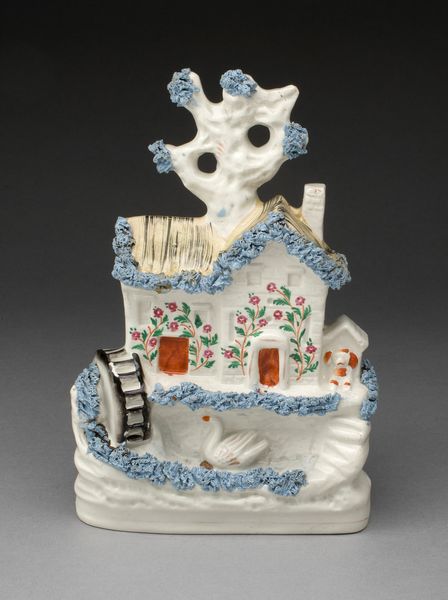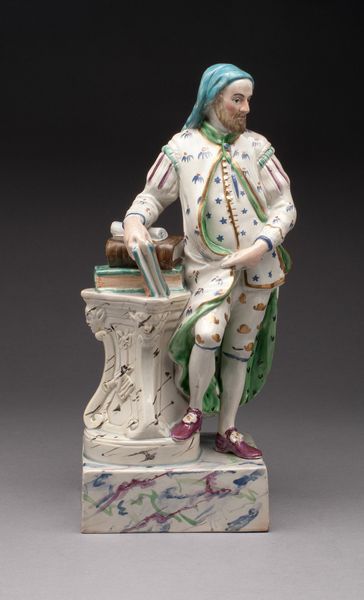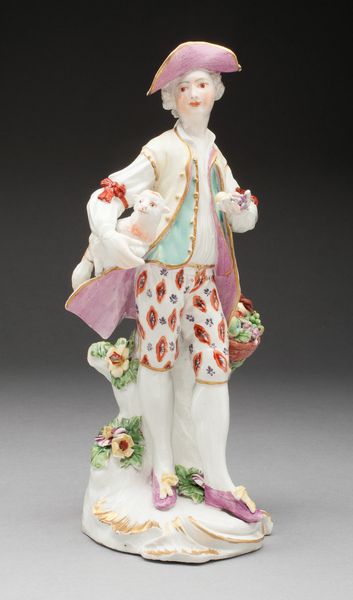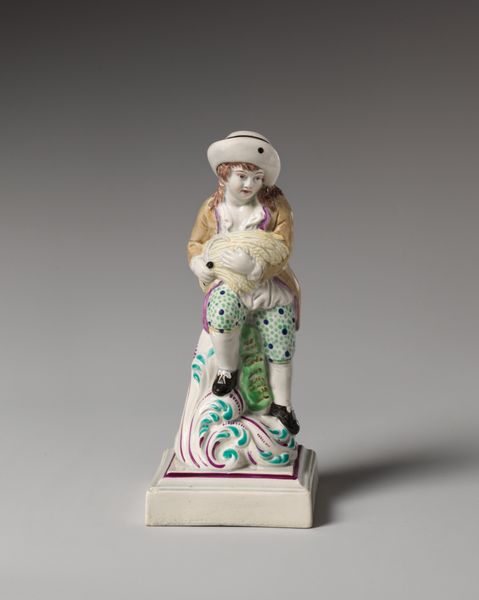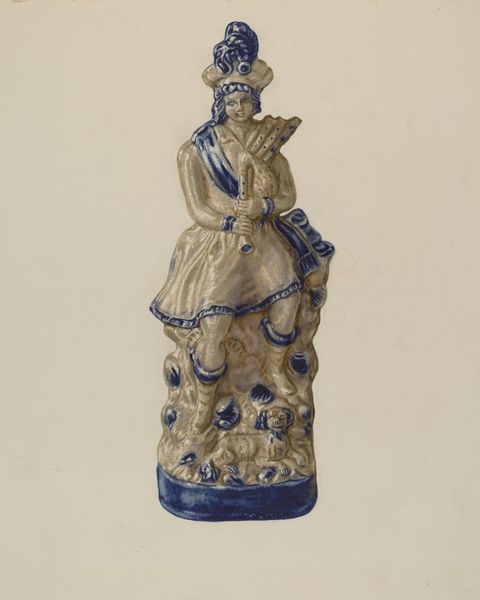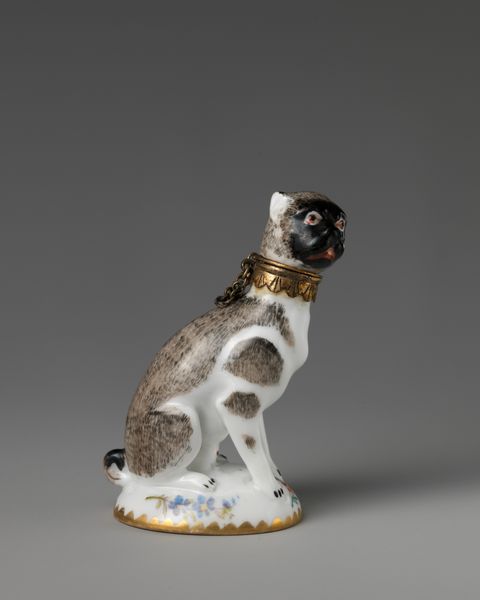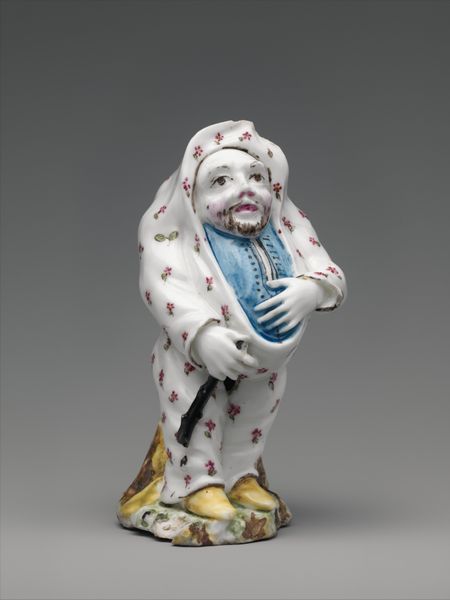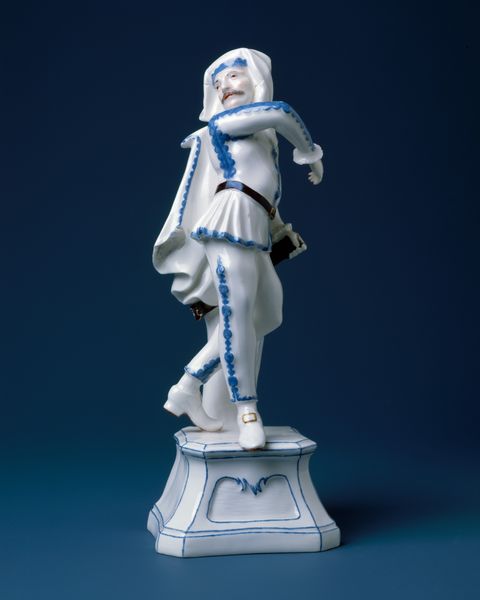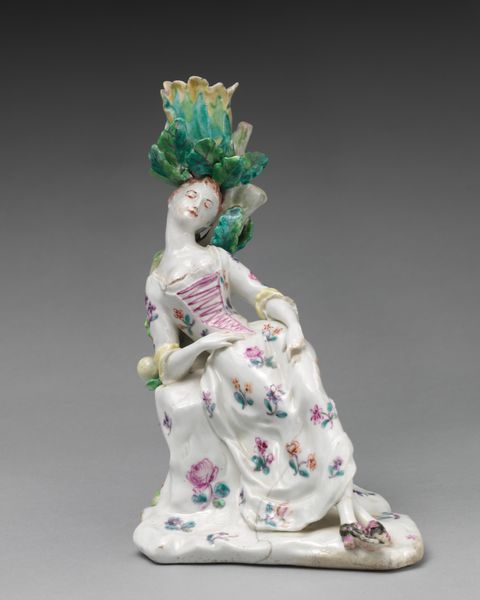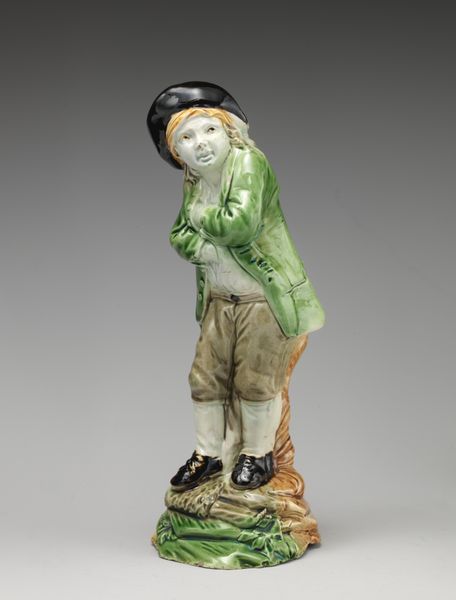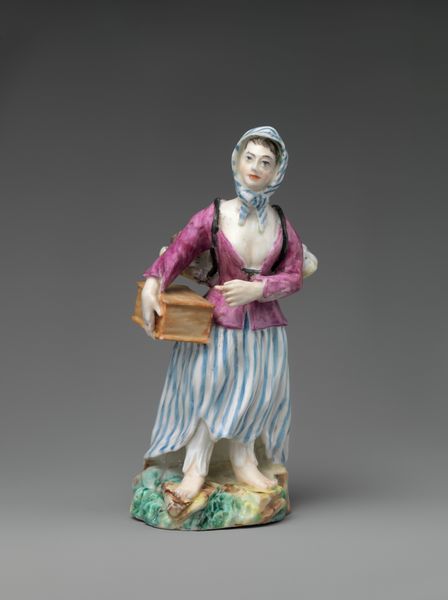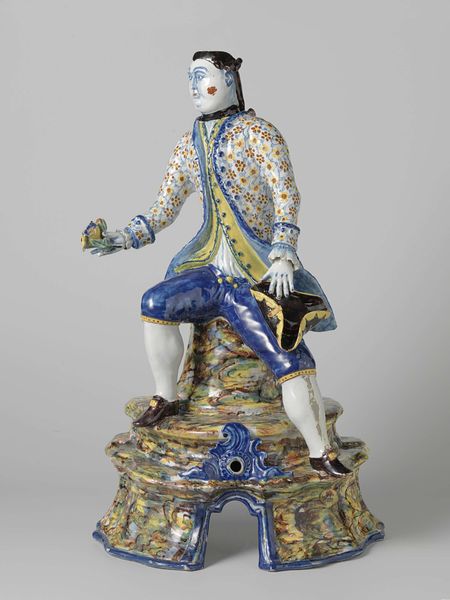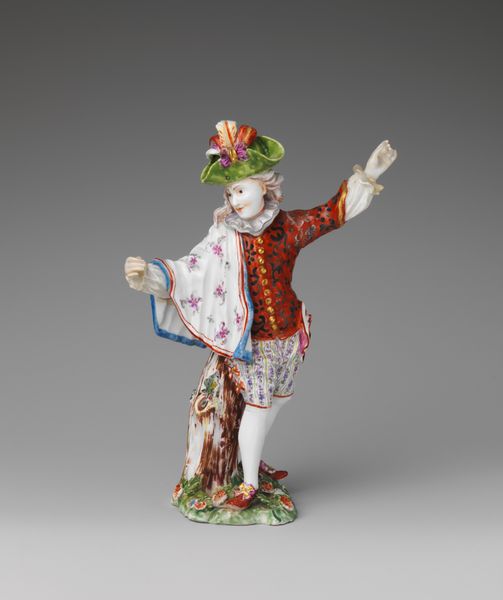
ceramic, sculpture
#
portrait
#
baroque
#
ceramic
#
sculpture
#
decorative-art
Dimensions: 19 × 9.1 cm (7 1/2 × 9/16 in.)
Copyright: Public Domain
Curator: Here we have "Bust of a Man," made circa 1710-1720 at the De Metaale Pot Factory. It's currently part of the collection at the Art Institute of Chicago. The bust is rendered in ceramic. What are your first thoughts? Editor: Well, the first thing that strikes me is how ghostly the piece feels. That pale figure with the sharp blue highlights evokes a sense of melancholy and perhaps even nobility. Curator: It is striking, particularly as we consider Delftware and its context. Often considered a decorative art, ceramic pieces like these, especially from factories such as De Metaale Pot, reveal the social climb of porcelain. How readily could a middle class household adopt stoneware that appeared like something from the aristocracy? What impact did that accessibility have on material culture? Editor: I’m more drawn to the figure itself. Look at the clothing details; they feel carefully articulated. That swirling floral design on his vest. And how the robe drapes across his shoulder-- the artist captures more than just a man, but an attitude and air of courtly gentility that he might want you to adopt for yourself! Curator: Precisely. It’s also crucial to think about how this particular color scheme functioned. Cobalt was an important mineral, but of equal impact was tin, the primary material necessary to achieve that beautiful, sought-after glaze. Editor: Ah, yes, and cobalt as a pigment itself had its own symbolic resonance. Cobalt was historically precious and hard to get—it speaks of quality and prestige when viewed. Here the vibrant blue might act as a signal for those seeking social cachet in their decor, creating a visual bridge between the earthly and the refined. Curator: Which leads us back to Delftware’s incredible impact. It’s decorative, for sure, but in this context the factory setting gives rise to fascinating dialogue about consumerism. This is a portrait meant for display, for collecting, and speaks volumes about class aspiration in 18th century Europe. Editor: I can’t help but think too about how that classic bust shape invites parallels between the sitter and images of the nobility and celebrated scholars, even in an interpretation. What visual strategies and artistic choices do you emulate from your betters if you are not one of them? And what aspirations does such an appropriation say? Curator: Those layers of interpretation and aspiration within this material are so thought-provoking! Editor: Indeed. It really does become a lens into so much more than just a handsome bust.
Comments
No comments
Be the first to comment and join the conversation on the ultimate creative platform.
